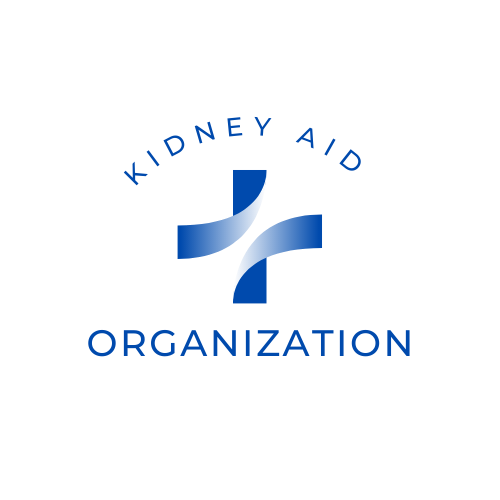Kidney disease requires careful management, and diet plays a pivotal role in slowing its progression and improving quality of life. Traditionally, this has involved in-person consultations, but the rise of telehealth has revolutionized how individuals can access critical nutritional guidance. This in-depth guide will explore how to effectively manage a kidney disease diet virtually, highlighting its benefits, available resources, and practical tips for success.
The Power of Virtual Care for Kidney Disease Diet Management
Managing a kidney-friendly diet can be complex, often requiring precise adjustments to protein, sodium, potassium, and phosphorus intake based on individual kidney function and stage of disease. Virtual care, or telehealth, offers a convenient and effective solution for navigating these dietary complexities. Benefits of Virtual Kidney Disease Diet Management:- Accessibility and Convenience:
- Reduced Travel Burden: Eliminates the need for travel to appointments, which is particularly beneficial for individuals with mobility issues, those in rural areas, or those with demanding schedules.
- Flexible Scheduling: Virtual appointments often offer more flexible hours, allowing individuals to schedule consultations that fit their personal and work lives.
- Comfort of Your Own Home: Receive personalized guidance from a registered dietitian from the privacy and comfort of your home.
- Personalized and Ongoing Support:
- Tailored Meal Plans: Dietitians can create customized meal plans based on your specific lab results, stage of CKD, dietary preferences, and lifestyle.
- Real-time Adjustments: Easily discuss changes in your symptoms, lab values, or food preferences with your dietitian, allowing for quick adjustments to your plan.
- Consistent Guidance: Virtual platforms often facilitate more frequent check-ins and ongoing support, which is crucial for long-term dietary adherence.
- Enhanced Education and Resource Sharing:
- Digital Resources: Dietitians can readily share educational materials, recipes, food lists, and portion guides digitally.
- Interactive Tools: Many platforms offer food tracking apps or online diaries that allow you to log your intake, which your dietitian can then review and provide feedback on.
- Cost-Effectiveness: In some cases, virtual consultations can be more cost-effective than in-person visits, especially when considering travel expenses and time off work.
- Improved Adherence and Outcomes:
- Studies suggest that telehealth interventions can improve dietary habits and clinical outcomes for individuals with CKD by enhancing accessibility and promoting consistent engagement with healthcare providers.
- The convenience and personalized nature of virtual care can lead to greater adherence to dietary recommendations, ultimately contributing to slower disease progression and better overall health.
Key Components of a Kidney-Friendly Diet (and How Virtual Care Helps)
A kidney-friendly diet aims to reduce the workload on your kidneys and prevent the buildup of waste products. A virtual dietitian can guide you through these crucial dietary considerations:- Sodium Management:
- Why it's important: High sodium intake can lead to high blood pressure and fluid retention, both of which strain the kidneys.
- Virtual support: Your dietitian can teach you how to read food labels, identify hidden sodium in processed foods, and explore flavorful low-sodium alternatives using herbs and spices. They can also help you plan meals and snacks that naturally limit sodium.
- Protein Control:
- Why it's important: The right amount of protein is essential, but too much can create excess waste products that damaged kidneys struggle to filter. The specific protein needs vary greatly by CKD stage.
- Virtual support: A dietitian will assess your kidney function and activity level to recommend appropriate protein portions and sources (lean meats, fish, plant-based proteins). They can help you understand how to balance protein throughout your day and avoid excessive intake.
- Potassium Monitoring:
- Why it's important: Kidneys normally regulate potassium levels, but impaired function can lead to dangerously high (or sometimes low) levels, affecting heart rhythm.
- Virtual support: Your dietitian will review your lab results and provide lists of high- and low-potassium foods. They can help you identify cooking methods that reduce potassium in certain foods (e.g., leaching potatoes) and strategize ways to incorporate a variety of safe fruits and vegetables.
- Phosphorus Management:
- Why it's important: High phosphorus can lead to weak bones and cardiovascular issues.
- Virtual support: Your dietitian can educate you on foods high in phosphorus (e.g., dairy, nuts, whole grains, dark sodas) and suggest suitable low-phosphorus alternatives. They may also discuss the role of phosphate binders if prescribed by your doctor.
- Fluid Intake:
- Why it's important: Depending on the stage of kidney disease, fluid restrictions may be necessary to prevent fluid overload and swelling.
- Virtual support: Your dietitian will help you determine your individual fluid needs and offer practical tips for managing thirst and tracking your fluid intake, including fluids from foods like soups and certain fruits.
- Overall Nutrient Balance:
- Why it's important: Ensuring adequate intake of vitamins, minerals, and calories is crucial for overall health and to prevent malnutrition, which can be a risk with restrictive diets.
- Virtual support: Beyond specific nutrient restrictions, your dietitian will ensure your diet is well-balanced, provides sufficient energy, and meets your micronutrient needs, potentially recommending supplements if necessary.
How to Access and Make the Most of Virtual Kidney Diet Management
Finding a Qualified Renal Dietitian:- Specialized Expertise: Look for Registered Dietitian Nutritionists (RDNs) who specialize in renal nutrition or chronic kidney disease (CKD). They have specific training and experience in managing kidney-friendly diets.
- Online Directories:
- National Kidney Foundation (NKF) website.
- Academy of Nutrition and Dietetics (EatRight.org) "Find a Nutrition Expert" tool.
- Specialized virtual kidney care platforms (e.g., MyorThrive, Kidney Ally, The CKD Dietitian, CKD Nutrition).
- Insurance Coverage: Many virtual dietitian services are now covered by major health insurance providers. It's essential to verify your coverage before booking.
- Referrals: Your nephrologist or primary care physician may be able to provide recommendations for virtual renal dietitians.
- Gather Your Information:
- Recent lab results (creatinine, GFR, potassium, phosphorus, sodium, albumin, etc.).
- List of current medications and supplements.
- Your medical history, including any other health conditions (e.g., diabetes, heart disease).
- A typical food diary for a few days, detailing what you eat and drink.
- Questions or concerns you have about your diet.
- Ensure a Quiet Space and Good Internet Connection: A stable internet connection and a private, quiet environment will help you get the most out of your video consultation.
- Be Open and Honest: Share your true eating habits, challenges, and preferences. The more information you provide, the better your dietitian can tailor a plan for you.
- Utilize Technology: If offered, use food tracking apps or online portals provided by your dietitian or virtual clinic. This allows for easier monitoring and feedback.
- Ask Questions: Don't hesitate to ask for clarification on any dietary recommendations, food choices, or meal preparation techniques.
- Communicate Challenges: If you're struggling with adherence, finding suitable foods, or dealing with symptoms, communicate this openly. Your dietitian can help problem-solve and adjust the plan.
- Regular Follow-ups: Consistent follow-up appointments are key to adapting your diet as your kidney function changes and to address new challenges.
- Engage with Provided Resources: Take advantage of any recipes, meal plans, or educational materials your dietitian shares.
Beyond the Virtual Consult: Self-Management Tips
While virtual dietitian support is invaluable, active self-management is crucial for success.- Become a Label Reading Pro: Understand how to read nutrition labels for sodium, potassium, and phosphorus.
- Cook at Home More: This gives you maximum control over ingredients and preparation methods, allowing you to limit problematic nutrients. Explore kidney-friendly recipes online (e.g., National Kidney Foundation's Kidney Kitchen, DaVita's recipes).
- Stay Hydrated (as advised): Follow your dietitian's guidance on fluid intake precisely.
- Portion Control: Even kidney-friendly foods need to be consumed in appropriate portions.
- Track Your Intake (if recommended): Using an app or journal can help you stay mindful of your dietary choices.
- Communicate with Your Healthcare Team: Keep your nephrologist and other doctors informed about your dietary changes and any concerns. Your dietitian will often collaborate with your medical team.
- Be Patient and Persistent: Dietary changes take time and effort. Celebrate small victories and don't get discouraged by setbacks.

